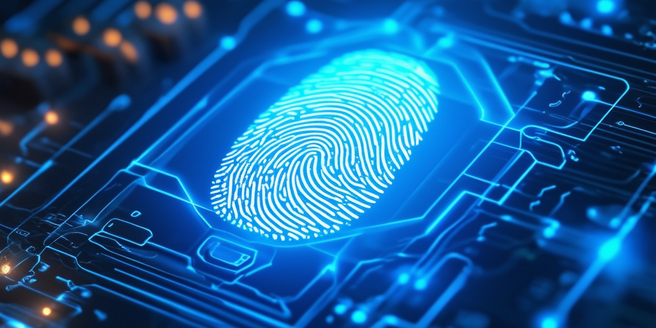
Understanding the Concept of Biometrics
Biometrics, an innovation focusing on the use of unique biological attributes, is gaining popularity particularly in securing systems and information. This technology uses unique traits like distinct fingerprint patterns, iris designs, and voice recognition patterns for verifying and identifying individuals. Owing to its inherent uniqueness and difficulty to replicate these attributes, it is highly impervious to counterfeiting and forgery, making it a reliable tool in preventing fraudulent activities and secure identification. The enhancing potential of biometrics in revolutionizing security measures is persistently researched and developed. As biometrics continues to grow, becoming an essential part of security in multiple industries, it holds great promise for a future where personal identification and security will require advanced mechanisms to counter threats. It is anticipated to become an even more integral tool in the prevention of security breaches in the future.
The Role of Biometrics in Fraud Prevention
The continuous growth in digital transactions globally has unfortunately led to a rise in fraud and security breaches. Recognizing this, organizations are using biometrics data in their security protocols as an effective strategy against scams and illegitimate activities. Biometrics identification is based on individuals’ unique biological traits, creating an unshared, unduplicable identity that remains ineffective without the genuine biological model, even if leaked. This principle makes biometrics an impervious mechanism in security, where stolen or misplaced data lacks utility unless paired with the actual biological counterpart. In conclusion, biometrics data serves as a protective buffer amidst the rise in fraudulent activities in digital transactions, offering a safety and confidence boost in digital commerce. By focusing on unique biological properties, biometrics enhance transaction security, thus offering a potent deterrent against the immense risk posed by digital frauds.
Advancements in Biometric Technology and Their Implications
Over years, we’ve seen impressive advancements in biometric technology, from early fingerprint identification to sophisticated methods like iris, face, and voice recognition. Recently, behavioral biometrics, a technique that detects individual patterns in how people use digital devices, added a new layer of digital protection, making identification and verification techniques hard to exploit. However, as devices grow more advanced and data grows more intimate, pressing concerns about privacy and ethics of data use arise. In this digital age, it’s crucial to not overlook the ethical considerations accompanying these technological advancements, and we must vigilantly monitor their impact on our lives and privacy rights, striking a balance between progress and maintaining privacy and security.
Biometrics vs Traditional Security Measures: A Comparative Analysis
Unlike traditional and often used security protections such as passwords or Personal Identification Numbers (PINs), biometrics provide a more secure alternative due to their foundation in distinctive human attributes or behavioural traits, which are difficult to duplicate. Unlike passwords or PIN codes that have inherent vulnerabilities and can lead to unauthorised access or loss of critical data, biometrics like facial recognition, retinal scanning, fingerprint identification etc., are more reliable, intuitive, and user-friendly. However, while offering extensive benefits, they are not without pitfalls and risks. Therefore, users must be informed and businesses need to work on mitigating any potential vulnerabilities associated with the use of biometrics.
The Future Outlook: Challenges and Opportunities in Biometric Fraud Prevention
While the potential offered by biometric technology is significant, its acceptance and implementation are met by a number of obstacles. Striking a balance between increasing security through biometrics and preserving individual privacy is a complex issue. Anxiety over potential system failures and data breaches can deter the expansive use of this technology. Additionally, there’s an inherent risk to privacy as security measures are enhanced, specifically with how biometric data is stored and protected. Despite their sophistication, biometric technologies are vulnerable to occasional glitches, leading to false results and compromising security. Yet, the dynamic evolution of technology brings capacity to tackle these issues and constantly improve protective measures. Biometric technologies promise to shape the future of fraud prevention, offering solutions to risks associated with online transactions by verifying identities through unique physical characteristics. Therefore, while concerns around privacy and reliability temper the potential of biometric technology, it plays an inalienable role in evolving technology and has the potential to create a safer digital landscape. As technology advances, so too does the ability to address these challenges, offering exciting opportunities in digital transaction enhancement and fraud prevention.
